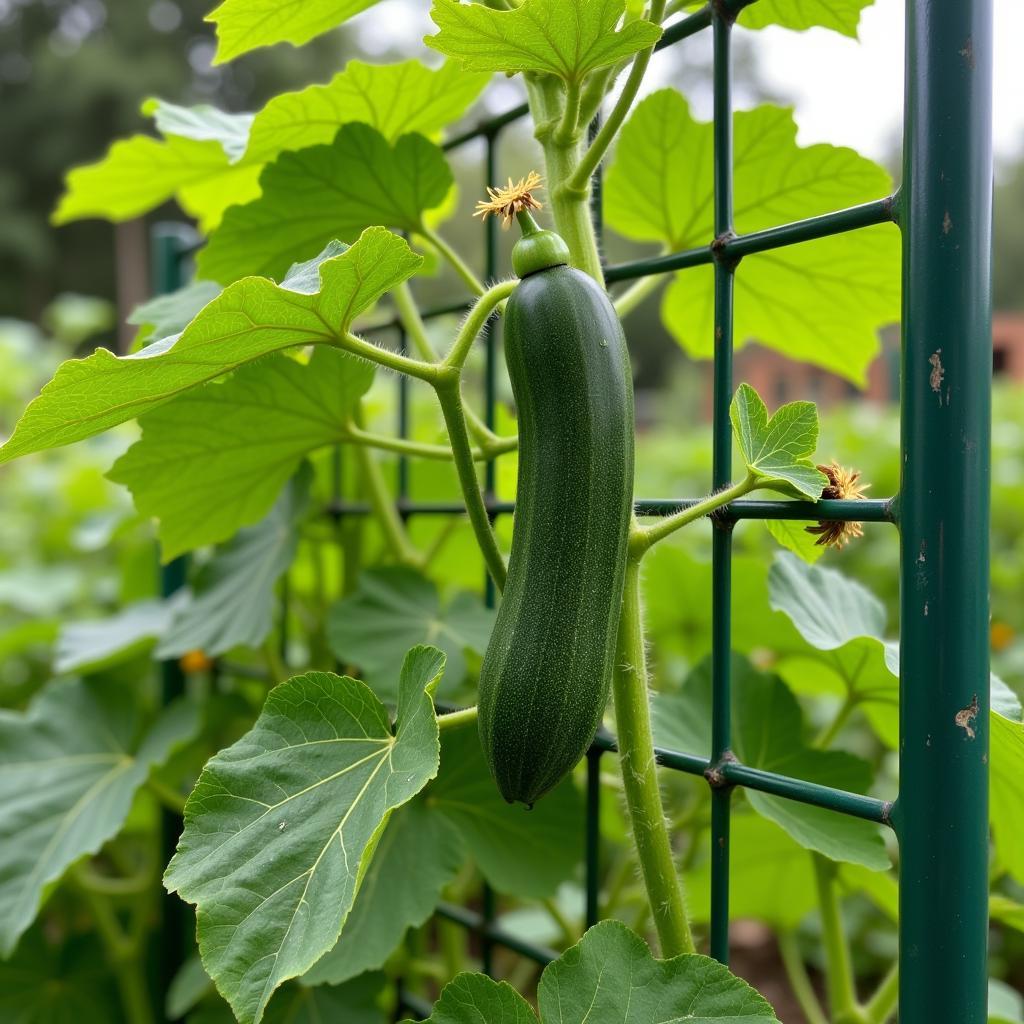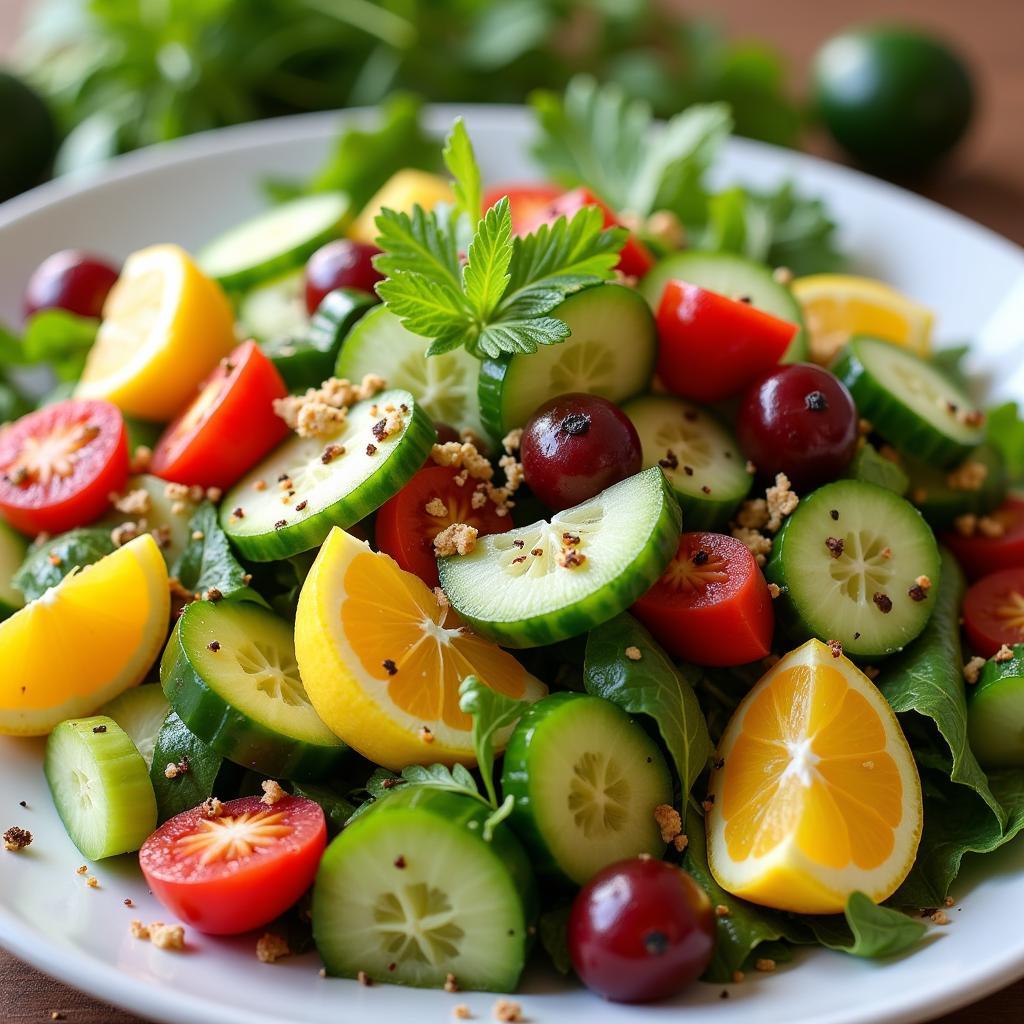Exploring the African Cucumber Plant: A Unique Garden Gem
The African Cucumber Plant, also known as the horned melon or kiwano, is a fascinating and visually striking fruit native to Africa. This article delves into the various aspects of this unusual plant, from its unique appearance and taste to its cultivation and culinary uses.
Appearance and Origin of the African Cucumber Plant
The African cucumber plant is a vine-like plant that produces an oval-shaped fruit covered in prominent spines. This distinctive appearance has earned it several nicknames, including the horned melon and jelly melon. While often referred to as a cucumber, it is actually a member of the cucurbit family, related to melons and squash. Its origins lie in Southern Africa, where it thrives in warm climates.
Cultivating the African Cucumber: Tips for Gardeners
 African cucumber plant thriving on a sturdy trellis system
African cucumber plant thriving on a sturdy trellis system
Growing an African horned cucumber is relatively simple, even for novice gardeners. These plants prefer warm temperatures and well-drained soil. They can be grown from seed, typically started indoors a few weeks before the last frost. Similar to other vining plants, providing a trellis or other support system can encourage healthy growth and maximize fruit production.
Taste and Culinary Uses: A Refreshing Treat
What does an African cucumber taste like? The fruit’s vibrant green interior is filled with numerous seeds encased in a gelatinous pulp. The flavor is mild and refreshing, often described as a combination of cucumber, banana, and lime.
 A colorful platter featuring a refreshing African cucumber fruit salad
A colorful platter featuring a refreshing African cucumber fruit salad
African cucumber can be enjoyed in a variety of ways. It can be eaten fresh, simply cut in half and scooped out with a spoon. Its unique flavor profile makes it a wonderful addition to fruit salads, smoothies, and even salsas. Some cultures also use it in savory dishes, pairing well with seafood and chicken. For those seeking new and exciting flavors, the African horned cucumber in Australia offers a delightful culinary adventure.
Health Benefits: Packed with Nutrients
Besides its intriguing taste, the African cucumber boasts several health benefits. It is a good source of vitamins C and A, as well as potassium and iron. The fruit is also low in calories and fat, making it a healthy snack choice.
Conclusion: Embrace the African Cucumber Plant
From its captivating appearance to its versatility in the kitchen, the African cucumber plant is a unique and rewarding addition to any garden or plate. Whether enjoyed for its refreshing taste or its nutritional benefits, this unusual fruit is sure to spark curiosity and delight the senses. For those interested in exploring other facets of African culture, be sure to check out our African American diet meal plan.
FAQs: Your Questions Answered
Q: Can I grow an African cucumber plant in a container?
A: Yes, African cucumber plants can be successfully grown in containers, making them a suitable option for patios or balconies.
Q: How long does it take for an African cucumber to ripen?
A: The ripening time for an African cucumber is typically around 80 days from seed to harvest.
Q: Are there any specific pests or diseases I should be aware of?
A: While generally resilient, African cucumber plants can be susceptible to common garden pests like aphids and cucumber beetles.
Q: What is the best way to store African cucumbers?
A: Store ripe African cucumbers in a cool, dry place. They can also be refrigerated for a longer shelf life.
Q: Can I eat the rind of an African cucumber?
A: While the rind is edible, it is often tough and not commonly consumed. Most people prefer to eat the juicy pulp and seeds.
Need more information? Contact us at +255768904061, kaka.mag@gmail.com, or visit us at Mbarali DC Mawindi, Kangaga, Tanzania. Our team is available 24/7 to assist you. Discover more about the fascinating world of African cuisine and culture on our website!
